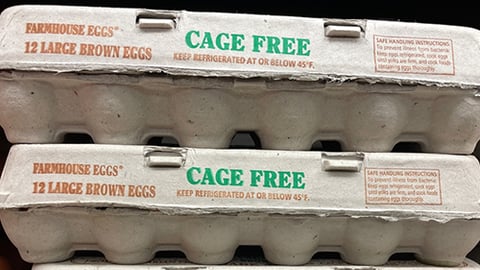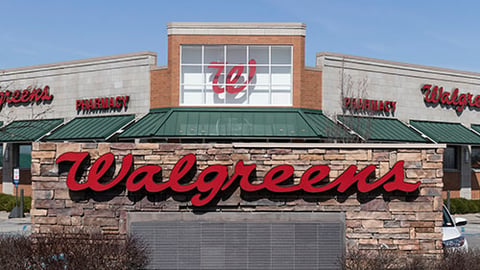Cage-Free Egg Production on Shaky Ground
A recent study on cage-free egg production has identified such barriers to adoption as huge challenges related to costs and construction, an ongoing lack of consumer demand, and rising concern about unintended consequences related to operations and financing. Conducted last year by a team of researchers from Michigan State University, with collaboration from Kansas State University and Purdue University, the study was funded by the FMI Foundation, United Egg Producers (UEP) and United Egg Association.
[Read more: "CVS, Walgreens Now Sourcing 100% Cage-Free Eggs at All Locations"]
Among the study’s consumer-related findings:
- More than half of consumers (56%) don’t know whether their grocery store has made a cage-free egg pledge, and only 19% think their store has made such a pledge.
- There are segments of consumers willing to pay considerable premiums for cage-free eggs, but the largest segment (representing 55% of consumers) is mainly motivated by price and doesn’t discriminate between cage and cage-free eggs.
- If conventional eggs are removed from the market, and prices remain unchanged, the share of consumers opting not to buy eggs will increase by 20%.
- Consumers prefer government subsidies to support cage-free transitions over mandates that require adoption of certain housing practices.
- Consumers also prefer establishing minimum cage-space requirements over the complete abolition of conventional egg production.
“While eggs are on most consumers’ minds, this research adds new information regarding the shopper’s willingness to pay for sustainability and animal welfare-related poultry practices and what they ultimately want their grocer to stock,” said David Fikes, executive director of the Arlington, Va.-based FMI Foundation. “We are proud to support this report, as it is consistent with the FMI Foundation’s ongoing work to help the food industry uncover, understand and better align with consumers’ ultimate values, whether those be cost, taste, convenience or a desired hen-housing method.”
“This research confirms what egg producers have known – cage-free transitions are extremely expensive, take years to implement and must be done in active partnership with their retail customers,” noted Chad Gregory, president and CEO of Johns Creek, Ga.-based UEP. “Further, the study sheds light on one of the greatest challenges – that grocery shoppers do not understand transition deadlines and largely are unwilling to pay the premiums necessary to make the transitions cost-effective for egg farmers and their retail customers.”
“Recently, inflation, supply chain issues, and avian flu outbreaks have led to a substantial increase in the price of eggs,” observed Dr. Vincenzina Caputo, an associate professor at East Lansing-based Michigan State University. “But on the horizon is a series of legal mandates and private-sector commitments to convert to 100% cage-free production by 2025. Adding these cage-free mandates and pledges to the mix could drive prices up even further. In our study, we look at this issue from both the consumer as well as producer perspective to understand how the market would shift in such a context. Providing an economic assessment of market and producer impacts paints a clearer picture of the future market environment for producers, consumers and other industry players. Likewise, it gives policymakers insights on how to react to these changes from a policy perspective, while also enriching the current debate on price inflation and cage-free mandates/pledges.”






